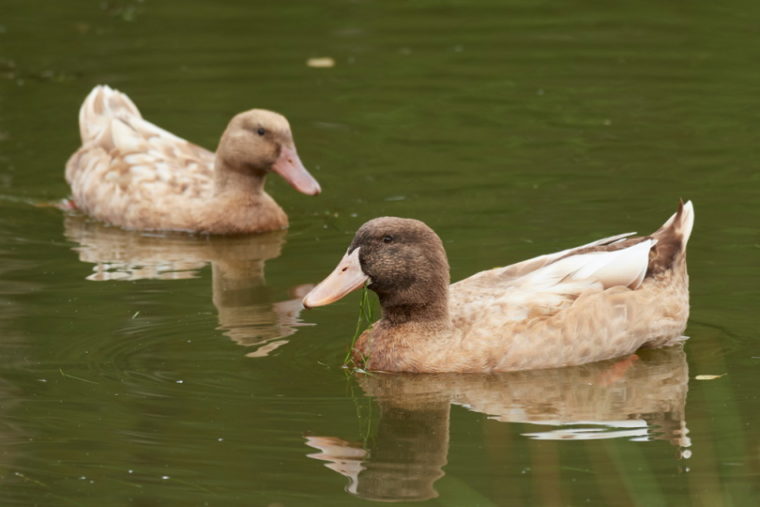The three separate domestic species were intentionally combined to create the Swedish yellow duck. Despite being somewhat uncommon, these ducks are desirable to own due to their placid nature and versatility.
Depending on where you are on the map, finding the Swedish yellow duck could be difficult. However, if you are fortunate enough to come across a couple of these stunning creatures at a nearby hatchery or breeder, they are typically simple to care for and make wonderful pets. Let’s find out more.

Quick Facts about Swedish Yellow Ducks
| Breed Name: | Svensk Gul Anka (Swedish Yellow Duck) |
| Place of Origin: | Sweden |
| Uses: | Triple purpose |
| Drake Size: | 7-8 pounds |
| Duck Size: | 6.5-7.5 pounds |
| Color: | Yellow, brown |
| Lifespan: | 8-12 years |
| Climate Tolerance: | Cold hardy |
| Care Level: | Moderate |
| Production: | Moderate |
| Temperament: | Calm |
Swedish Yellow Duck Origins
Mans Eriksson created the Swedish Yellow Duck in the Swedish province of Skane. Although the specific ducks used to create this yellow waterfowl are in some dispute, it is generally believed that Blue Swedish, Khaki Campbells, and certain local breeds of white duck were employed.
In the 1930s, Swedish yellow ducks were unexpectedly prevalent. These useful waterfowl were created in the 20th century and ended up populating fields all throughout Sweden. They didn’t start developing into what he would call a unique duck breed until the 1950s.
Only in their native Sweden have they been confirmed to still exist today.

Swedish Yellow Duck Characteristics
Swedish yellow ducks are well recognized for having lovely dispositions and are wonderful pets for both children and adults. They’re easy to handle and essentially flightless, so you might utilize them for homework assignments and other planned activities.
The most of the day is spent waddling around the barnyard by the Swedish yellow duck. As with any waterfowl, they enjoy being close to a water source. Male ducks should be gentle outside of breeding season, when they may become aggressive toward other ducks.
The fact that this duck is robust and relatively energetic to support strong foraging abilities cannot be disputed.
Uses
When you select the Swedish yellow duck, you get the best of all worlds. These birds are suitable for producing eggs, meat, and any other usage you can think of. They are a breed that serves three distinct functions, so why haven’t they experienced a resurgence in popularity throughout time?
Despite the fact that they are a rather uncommon breed, we advise against using them as meat if at all possible. The situation would be better served by one of the several other large meat ducks currently available. Nevertheless, they produce a meaty and flavorful chicken.
The big, white eggs laid by these ducks may acquire a bluish or grayish tint. They can often lay up to 130 eggs per year.
These ducks frequently become pregnant because of their Blue Swedish ancestry and make wonderful mothers. They will be content to mother other ducks’ and even chicken eggs, even if they don’t have their own clutch of eggs to raise!

Appearance & Varieties
The majority of Swedish yellow ducks are, as their name suggests, yellow in color. The males are sexually distinct from the females despite having brown heads. Males weigh one or two pounds more than females do on average.
This breed is sometimes referred to as yellow. They are more buff to yellowy-brown in hue, if you look closely. White ducks, Khaki Campbells, and Swedish ducks were combined to create the appearance.
Population/Distribution/Habitat
Today’s world has a limited supply of Swedish yellow ducks.

Are Swedish Yellow Duck Good for Small-Scale Farming?
Due to their versatility, Swedish yellow ducks are excellent for small-scale farming. You won’t get access to the specific species, though, unless you reside in Sweden.
The Khaki Campbell and Swedish Blue are two further similar ducks that might be easily accessible. In addition, various waterfowl, such as the Buff Orpington duck, resemble the Swedish Yellow.
Dennis Jacobsen, Shutterstock, is the author of the featured picture.
